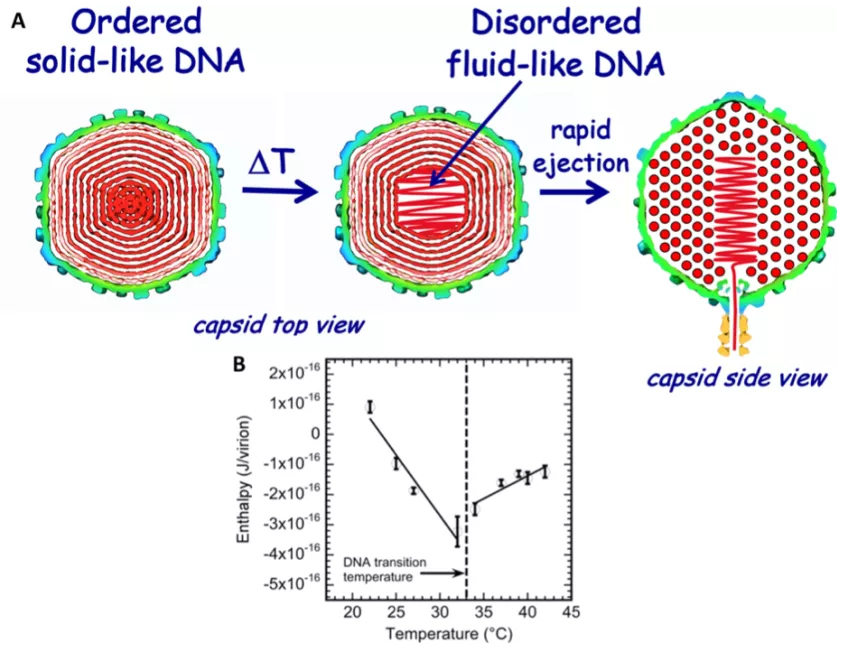Microcalorimetry
The isothermal titration calorimetry (ITC) provides the most direct method to measure the internal energy of the confined viral genome. In order to experimentally dissect the thermodynamic determinants of viral DNA packaging and ejection energetics, we were first to use ITC to directly measure the heat released by DNA ejection from a virus capsid. This approach allows one to address experimentally the relative weight and origin of enthalpic and entropic contributions to the free energy of DNA packing inside a phage capsid. Furthermore, we have recently shown that ITC can be also successfully used to measure DNA ejection dynamics by measuring reaction kinetics reflected by heat flow (so-called kinITC) due to the very short response time of modern ITC instruments.
Figure: Schematic illustration of DNA disordering transition in the capsid. Transition occurs when the temperature is increased as we first observed with isothermal titration calorimetry. (A) DNA disordering transition, which occurs when the temperature is increased, originates close to the center of the capsid, where DNA is more stressed due to stronger bending and larger packing defects. (Left) Cross-sections of the top view of the capsid. (Right) A side view cross-section of the capsid, which illustrates that DNA closer to the center of the capsid is likely to be ejected first since, due to dsDNA bending stress constraints, it is the last DNA portion to be packaged in the capsid during phage assembly. The schematic illustration of DNA inside the capsid shows the ordering of an averaged DNA structure and not the arrangement of individual DNA strands. (B) Enthalpy of DNA ejection per virion (J) versus temperature for virus (phage lambda) titrated into LamB receptor solution. Abrupt enthalpy change inversion with temperature at ~33 ̊C shows transition in energetics of DNA state inside the capsid.


